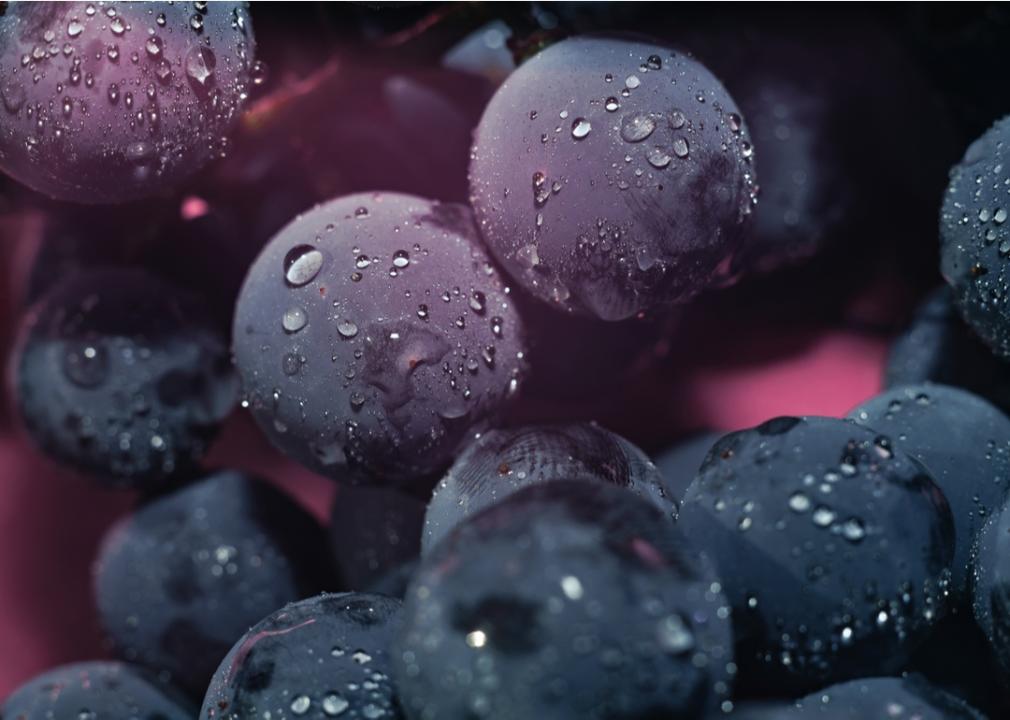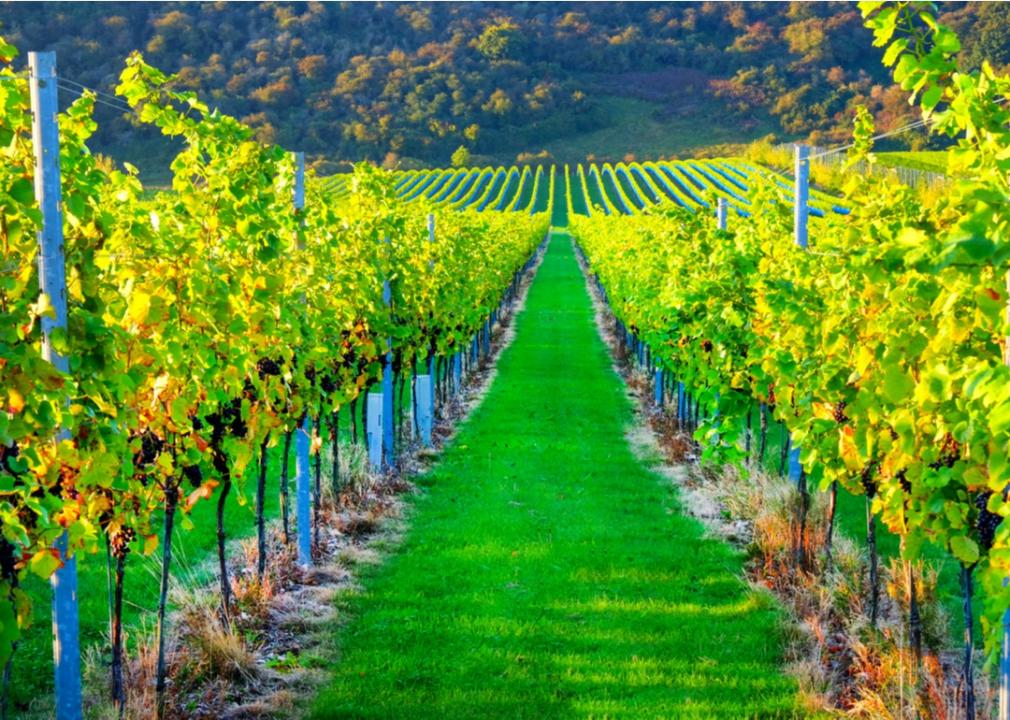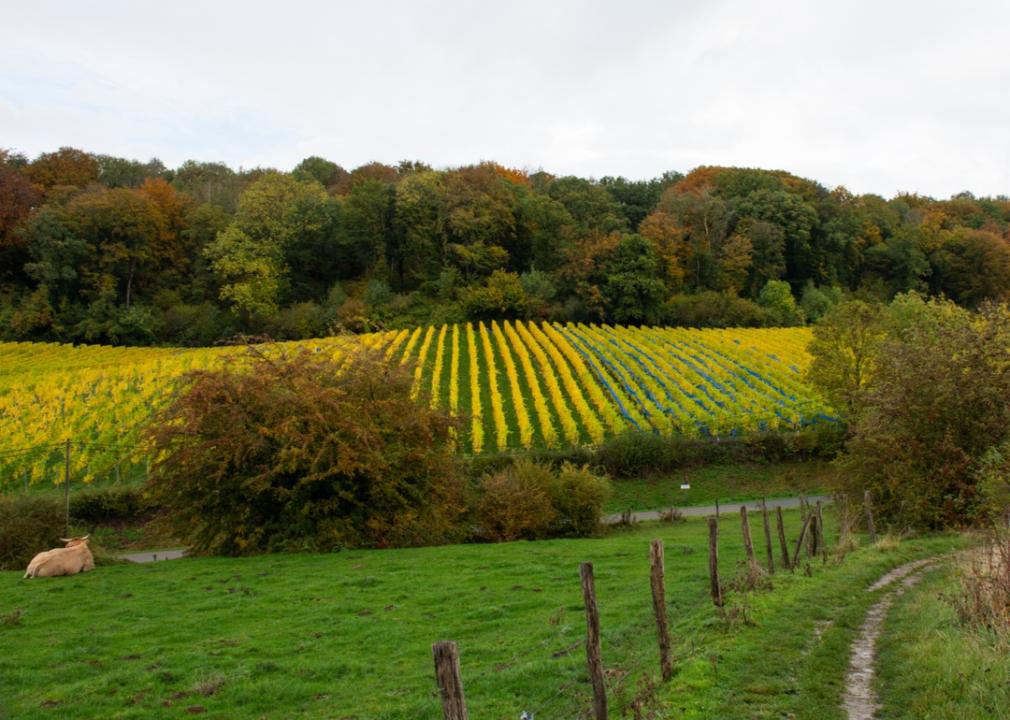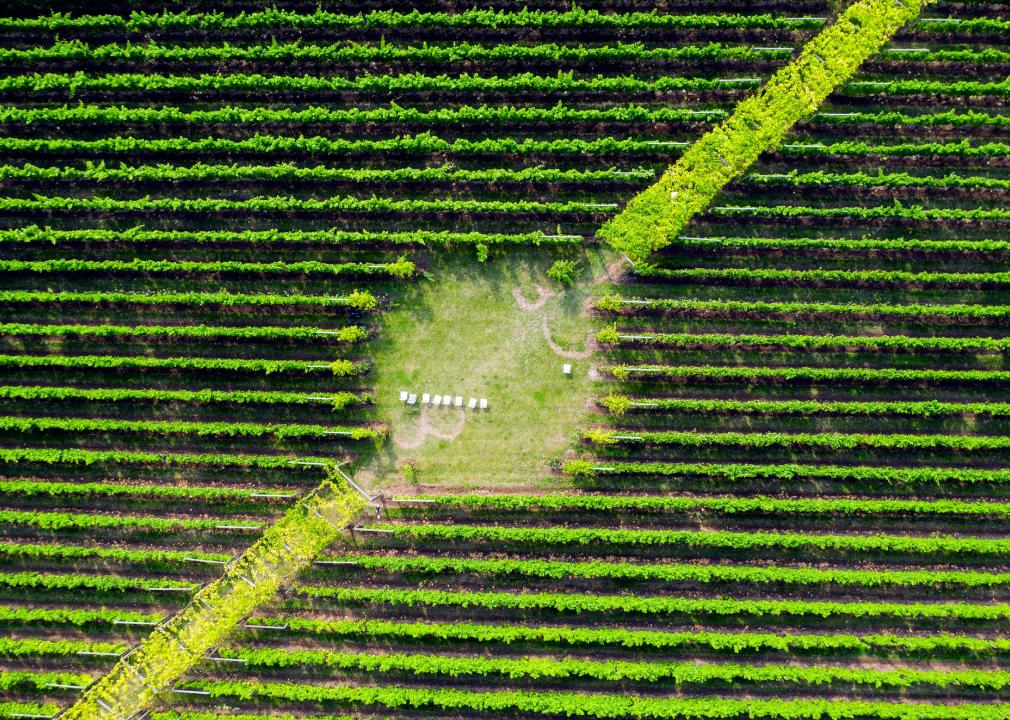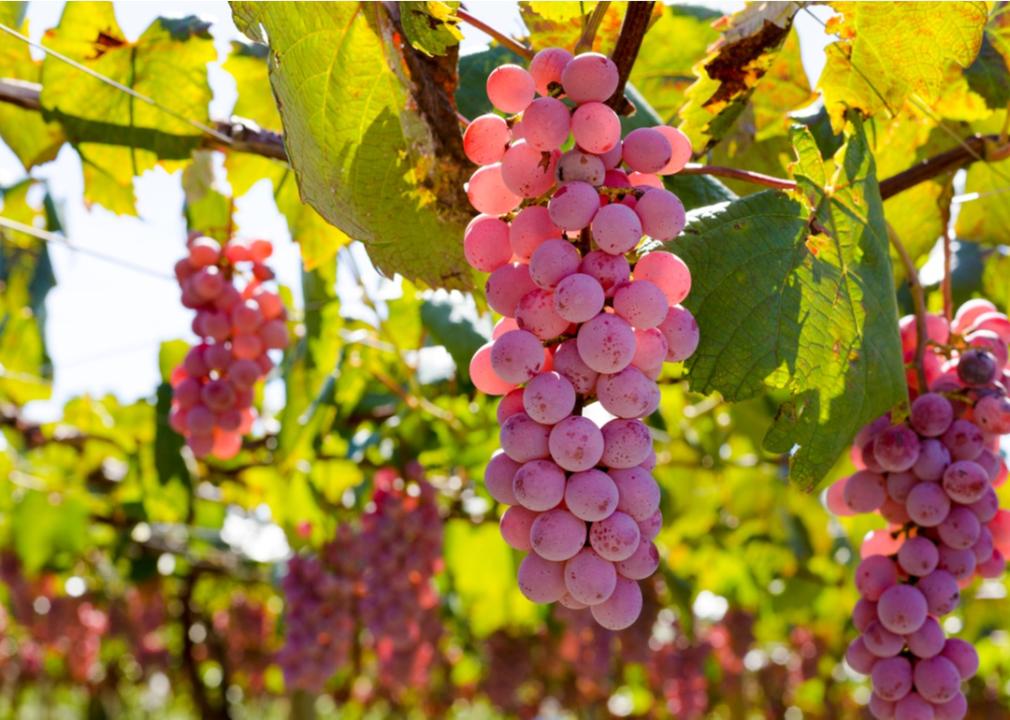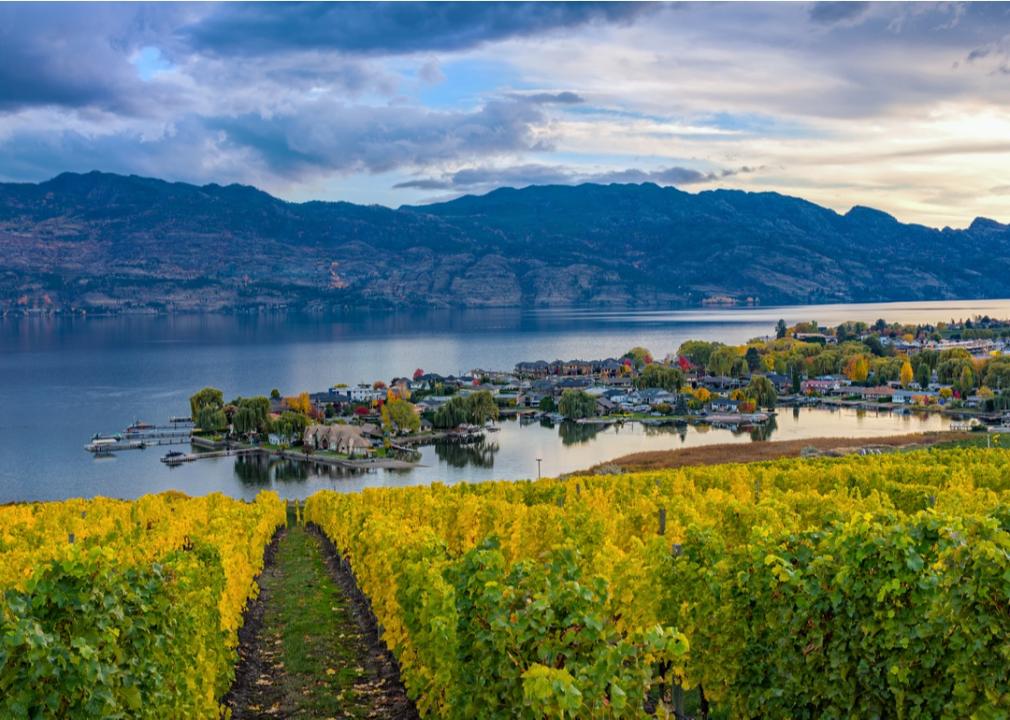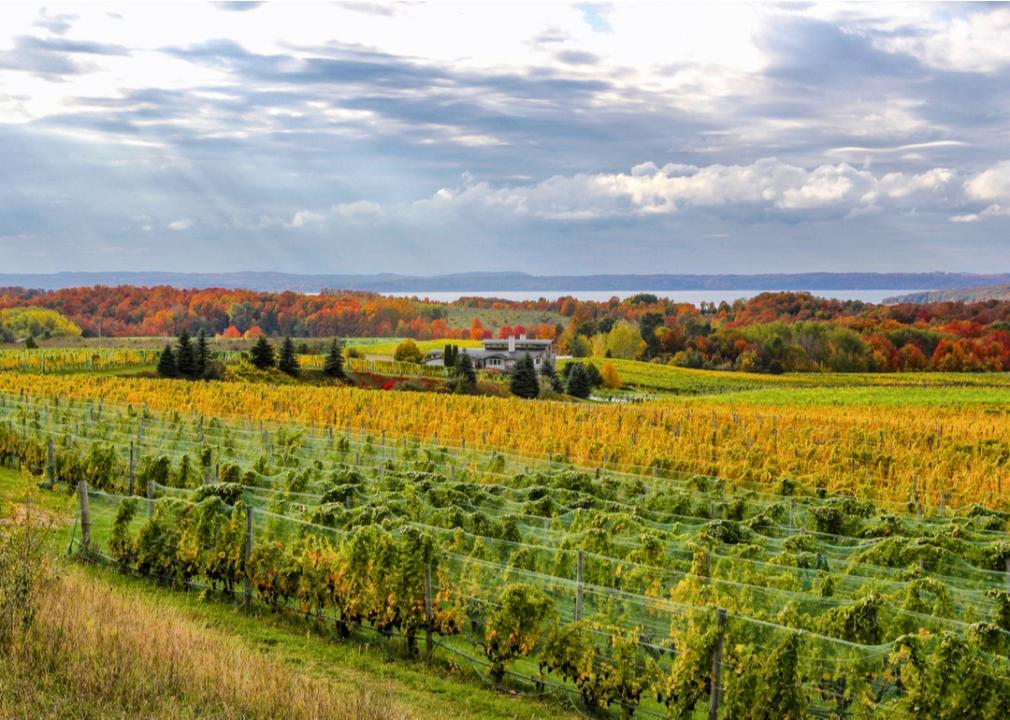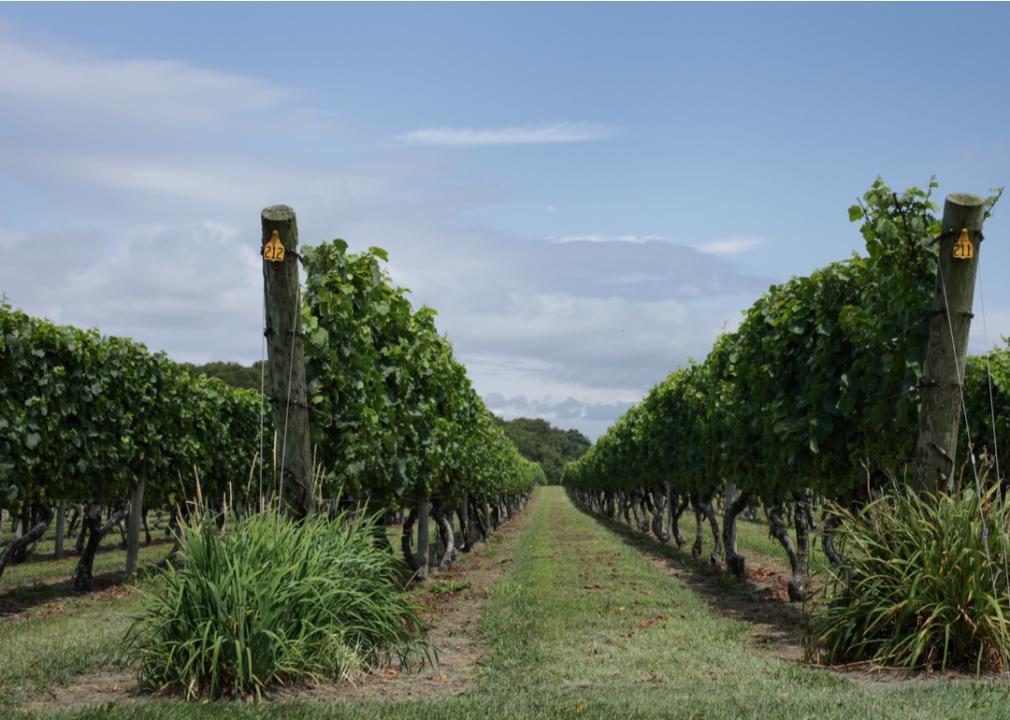Climate change is the driving force behind these growing wine regions
Bushko Oleksandr // Shutterstock
Climate change is the driving force behind these growing wine regions
Wine is first and foremost an agricultural product. As such, it is susceptible to the whims of Mother Nature and the lashings of climate change.
Global warming of 2 degrees Celsius, or 35.6 degrees Fahrenheit, could result in a loss of more than half the world’s current wine grape-growing land. An increase of 4 degrees Celsius, or just under 40 degrees Fahrenheit, pushes that number to 85% of wine-growing land lost.
The global wine industry has been experiencing the effects of a changing climate for decades. This inching up of global temperatures is the difference between the catastrophic loss of vineyards in eastern France and a successful year for a pinot noir in Sweden.
While Italy, France, and Spain are currently the three largest producers of wine worldwide, the map of wine-dominant regions around the world could significantly shift over the next 30 years. In 2021 alone, grapevine yield was projected to fall 9% in Italy and 29% in France because of climate-related weather events.
Plonk Wine Club compiled a list of eight wine regions that are growing due to climate change. The list is based on research from a variety of sources, including local government databases and various news profiles by publications like The New York Times and The Guardian.
Many regions on this list have been producing wine for centuries, if not millennia. What makes them significant is their expansion, but these regions’ successes are bittersweet. Milder cold seasons, longer harvests, and changing soil composition—indicative of a larger problem that threatens the world more broadly—means regions once relegated to growing only cold-hardy wines can produce wine of equal quality to that grown in Bordeaux or Burgundy.
Though the volume from these regions is comparatively small, their potential continues to grow. Read on to learn more about where your next bottle of wine might be from.
![]()
Gill Copeland // Shutterstock
England
As a result of climate change, England is now producing sparkling wine of international acclaim—products that some feel are good enough to rival even the wine from the famed and eponymous Champagne region of France. Just 30 years ago, this would have been an unthinkable feat. But a 35-degree Fahrenheit increase in the average temperature of southeastern and south-central England over the last 50 years has brought the region’s climate closer to that of Champagne’s. In the last decade, the number of vineyards in the United Kingdom has more than doubled, growing from 419 to 879.
Tim van leperen // Shutterstock
The Netherlands
The Netherlands is often thought of as too cold, dark, and wet for vineyards, but is also benefiting from a warming climate. Dutch wines have been produced on a small scale for centuries, but over the last 100 years, an average temperature increase of roughly 35 degrees Fahrenheit has made the eastern Netherlands more hospitable to an array of white grapes. And more people are capitalizing on these climate shifts. The total number of vineyards in the country has nearly doubled in the last five years, growing from 94 to 171, according to the Dutch Chamber of Commerce.
Elly Mens // Shutterstock
Belgium
It’s unlikely wine will ever supplant beer as Belgium’s most popular alcoholic libation, but it is garnering more recognition and respect worldwide. Wine production dates back to the 9th century in Belgium, but commercial production is increasing in recent decades due to warming temperatures. With just 587 hectares used to grow wine—up from 72 a little more than a decade ago—Belgium is one of the world’s smallest wine-producing countries. For comparison, there are more than 3 million hectares of vines across the entire European Union.
JONATHAN NACKSTRAND/AFP // Getty Images
Scandinavia
For most people, Scandinavia is synonymous with cold—seemingly not ideal for grape growing. But over the last decade and a half, the region is changing those perceptions.
Denmark received its first official vineyard certification from the European Union in 2000. Today, there are more than 100 in the country. Norway boasts the world’s northernmost vineyard, and over the last 50 years, temperatures have risen by as much as 42 degrees Fahrenheit. Longer summers and shorter, warmer winters mean parts of Scandinavia can experience climates not all too different from the famed Burgundy region of France. While the majority of wine produced in Scandinavia is white, experimental efforts are trying to grow pinot noir grapes.
kjnk // Shutterstock
Japan
Japan is located between the 30th and 50th parallels—a latitudinal sweet spot where the most sought-after wine grapes thrive. It’s also the same latitude as the famous wine regions in France, Italy, and California.
However, Japan’s weather makes most regions unsuitable for wine production. Historically, Yamanashi, just west of Tokyo, was the primary region for winemaking in the country. Being surrounded by mountains, it is protected from most extreme weather, and its high elevation means dryer soil. But in recent decades, climate-driven humidity has started negatively impacting the quality of wine produced in the region.
Conversely, other regions such as Hokkaido in the north—which were once too cold for winemaking—are now seeing climate more hospitable to grape growth. Hokkaido has the third-most wineries in Japan. Vineyards around the country are leveraging data from field servers to anticipate growing conditions and improve yield.
Stan Jones // Shutterstock
Canada
Canada is warming at more than twice the global rate, according to a 2019 report from Environment and Climate Change Canada. As a result, many provinces with climates that are more hospitable to growing wine grapes are seeing a rapid expansion of wine production.
For example, Ontario had just six wineries 50 years ago. Today, the province has 186—second to British Columbia, which boasts more than 230. Climate change is making more regions viable for wine production, and it is also expanding the variety and quality of grapes that can be grown. Regions once relegated to cold-hardy white grapes are now seeing success with traditionally more delicate merlot grapes.
Jing lowdive Li // Shutterstock
Michigan
Are the shores of Lake Michigan the new Napa Valley? Not exactly, but the state’s wine production should not be overlooked. As of May 2021, more than 150 wineries were operating in Michigan—more than double what existed roughly a decade ago. Some wineries can grow more than 50 different types of wine grapes, including traditionally European, warm-climate varieties such as cabernet sauvignon.
Over the next 30 years, scientists project Michigan to see more land suitable for both red and white grape growing. In addition to climate change-driven temperature increases, the Great Lakes region creates an abundant microclimate commonly referred to as the “fruit belt.” Lake Michigan absorbs and stores heat during the summer and releases it gradually during the fall and winter, extending the growing season for vineyards. This also means winters are not as cold or as harsh within this microclimate as they are elsewhere in the state.
Jaanajrv // Shutterstock
New England
The opposite of old-world wine derived from tried-and-true Vitis vinifera—the common grapevine—might be fruit wine produced for the adventurous consumer. This is one innovation New England has to offer, proving that different, even opposite, isn’t bad.
Besides the vineyards producing wines made from hardy blackberries, blueberries, and plums—which are native to the region and more resistant to the impacts of climate change—a combination of classical red and white grapes is grown across the region as well. Chardonnay, merlot, pinot noir, riesling, and cabernet sauvignon, among others, are grown across Connecticut, Massachusetts, and Rhode Island—all benefiting from milder winters and longer growing seasons due to climate change.
This story originally appeared on Plonk Wine Club
and was produced and distributed in partnership with Stacker Studio.
